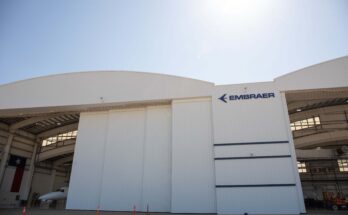
As the A330 has matured, the retrofit market for the model has grown considerably. With the series having widely proliferated across both the civil and military sectors and continuing to sustain a healthy base of new-build orders, the overall retrofit trajectory for this ubiquitous aircraft will remain promising over the coming decades. Although the financial burdens and depressed demand environment foisted upon commercial airlines in the wake of the COVID-19 pandemic resulted in a corresponding contraction of retrofit activity for the aircraft over 2020-2022, the A330 retrofit and modernization market now appears on track to sustain a healthy recovery over the coming decade, in tandem with that of the industry itself.
Retrofit segments such as seating, IFE, lighting, and cabin reconfigurations suffered particularly acutely from the decline in passenger demand over the past several years. However, these segments exhibited resurgent momentum through 2023. After a prolonged spell of financial retrenchment, passenger carriers are now again able to invest in the introduction of the latest creature comforts. In anticipation of the full recovery of passenger traffic, airlines are racing to offer the flying public a superior flying experience to their competitors through the introduction of premium-economy seating options, free wi-fi access and other perks and comforts that might differentiate their offerings from those of their peers. Ongoing or impending cabin and seating refits by Delta Airlines, Swiss International Airlines and Cathay Pacific all are indicative of the intensification of market competition in this domain.
In the intermediate term, the diminished strength of the global fleet of legacy A330 platforms will continue to impose constraints on the potential scope of retrofit activity. In the wake of the pandemic, numerous commercial operators around the world opted to implement far-reaching fleet rationalization programs – aiming at divesting myriad aircraft from service by 2025. Although a lull in global oil prices had long served to slow the replacement of many first-generation A330s with more fuel-efficient new-build aircraft, the tumultuous global developments of the past several years and the correspondingly depressed state of consumer demand made retention of these assets an increasingly cost-inefficient proposition for already cash-strapped commercial airlines. This environment caused American Airlines to accelerate the divestment of its entire A330 fleet, while Lufthansa Group’s subsidiaries moved to retire their oldest A330-200 inventories. Although many of these aircraft have subsequently re-entered commercial and freight service as secondhand assets under new ownership, others have permanently exited the pool of potential R&M candidates.
In the longer term, however, robust demand for new-build A330 models will in turn generate a fecund environment for retrofit opportunities. Over the coming decade, Airbus is expected to produce over 300 new-build A330 aircraft, including at least 290 of the A330-900neo model. Although expedited retirement of older airframes and emphasis on investment in line-fit capabilities will introduce intermediate-term challenges for the R&M sector, the long-term outlook for the A330 platform, and by extension the R&M market that services it, remains robust.
The expedited retirement of many aging passenger airframes has also been an accidental boon to a different segment of the A330 retrofit market. Across the widebody segment, demand for cargo conversions catapulted to record highs over the past three years as operators scrambled to capitalize on the massive profit potential of this trend, and A330 cargo conversions were no exception. Although a slower-than-anticipated economic recovery in parts of the critical APAC region, and the gradual onset of a stabilized market equilibrium across the e-commerce segment more broadly, began to precipitate a cooling of the demand environment for freight conversions through 2023, activity will remain robust through the coming forecast period, with major providers having already amassed a significant backlog of orders.
As the most established and well-connected conversion providers, EFW and ST Aerospace have been the primary beneficiaries of this trend. In response to the recent surge in demand for P2F assets, in 2023 EFW/ST partnered with Turkish Technic and the U.S-based Mobile Engineering to open two major new P2F conversion facilities. The expanded regional coverage and production capacity generated by these new facilities will further consolidate EFW/ST’s market dominance over the A330 conversion segment. Despite the relative deceleration of the PF2 segment’s growth trajectory over the past year, the critical role played by e-commerce in the global economy and the substantial scale of the A330 feedstock available for conversion will ensure it retains a positive outlook in the years ahead, particularly in Asia and North America. At the time of publication, in excess of 1,000 A330 airframes are available for potential conversion.




